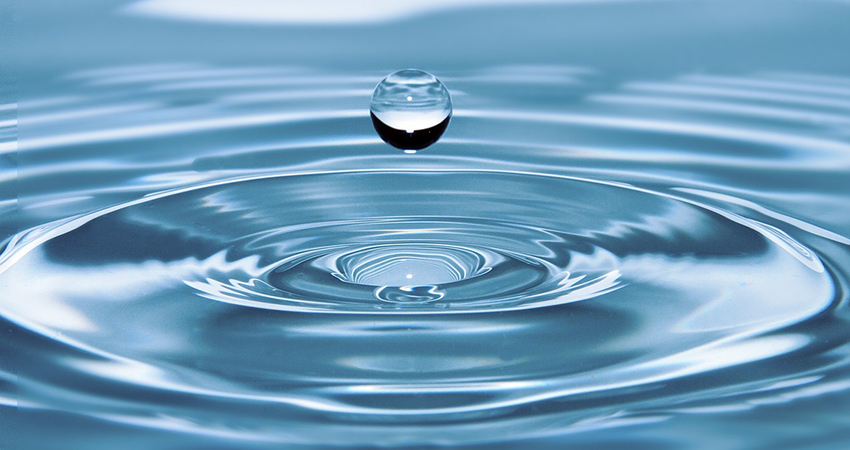Opportunities for technology that extracts water from air

-
 Fergal MacErlean
Fergal MacErlean
Share article:
Technologies that extract water from air could be entering a stage of major growth as a future solution to drought, particularly in arid regions without other water sources. Atmospheric Water Generators (AWGs) now range from home-based units that can produce one to 20 litres of water per day to commercial-scale units capable of creating 1,000 to more than 10,000 litres per day.
As each cubic metre of air throughout Earth’s 100–600 metres thick atmospheric boundary layer contains 4–25 grams water vapour, this potentially allows water to be supplied almost anywhere. Water vapour density varies with geographical location, altitude, time of day, and season. Density is higher close to sources of vapour such as water bodies and vegetation. It may be a solution for certain European regions that are suffering from extreme drought.
Energy-intensive technology
The most prevalent AWGs (some 90% of the market) use a condenser and cooling coil technology (or similar) to draw moisture from the air by condensing the single water molecules that exist as water vapour. These systems, however, are highly dependent and sensitive to air temperature and the amount of water vapour, or humidity, in the air. Initially these systems required large quantities of energy to operate the condenser and fan systems though recent technological advancements have substantially improved the energy-water ratio.
Large fluctuations in production
A 2022 study of a commercially available AWG device, Drinkable Air C-8, over the course of a year in Sharjah under the United Arab Emirate’s hot and humid climate found that water harvesting rates are strongly influenced by inlet air temperature and relative humidity. The study reported that ‘the ideal operating conditions for the machine have been determined to be 22°C and 63% relative humidity’. The yearly average water harvesting rate was calculated to be 0.36 L/hr, with an electrical usage of 2.25 kWh/L at a cost of 0.18 $/L. Large fluctuations in production were recorded. Water was generated at a maximum rate of 0.95 L/hr by the device in February while consuming power at a rate of 0.84 kWh/L at a cost of 0.07 $/L. The lowest rate of water production was reported in January, when cooler temperatures gave a water rate of 0.13 L/h with a 1.98 kWh/L energy consumption.
Renewable energy sources
The study authors note that a more competitive cost of water production can be achieved by integrating renewable energy sources as a driving force for atmospheric water generators. They note that a ‘solar PV-powered drinkable air C-8 would be a more economical, sustainable, and environment-friendly source of drinking-grade water’.
Treatment of organic compounds
AWG systems that condense water vapour [mechanical dehumidifiers] have had to tackle the issue of organic compounds in the air which can dissolve in the condensate, providing a food source for microbial growth in plumbing and stored water. Filters embedded with silver ions and UV lamps are now utilized to resolve these issues.
Desiccant technology
Second generation AWG systems, such as the under-trial, Israeli-developed H2OLL, use absorption or liquid desiccant technology to target only the water vapour molecules in the air, generally using a salt solution. As these systems do not need to run a condenser they are, theoretically less energy intensive, and quieter. An advantage of these systems is that they can operate at very low absolute humidity levels (typically at levels greater than five grams per cubic metre).
Complementary technologies
Roland Wahlgren, a physical geographer and scientific and technical consultant who has been working with the water-from-air community since 1984, said: “Liquid or solid desiccant AWG technologies are best suited to arid sites or seasons with relatively low water vapour content in the air. Mechanical dehumidifiers work best in more humid sites or seasons. The two technologies are best viewed as complementary, not rivals.”
Different purposes
“The niche for AWG systems is to provide potable water for drinking, hygiene, and controlled environment crop irrigation at sites where there is genuine scarcity of liquid fresh water. No matter how polluted it [liquid fresh water] can be treated and made potable for less energy cost compared to changing the phase of atmospheric water from gas to liquid. But, at sites with seasonal droughts AWGs may complement other sources. Site specific considerations may favour using AWGs for drinking water and other sources for non-potable water uses.”
High costs threshold
Wahlgren: “The industry is challenged by the relatively high capital and operating costs of AWGs. This tends to make the technology unaffordable for those most in need of a safe and reliable clean water supply.” Vancouver-based Wahlgren remains enthusiastic about the future for AWG systems. His research and development business, Canadian Dew Technologies Inc., offers preliminary studies from www.candew.ca among other services with information for individuals and organizations planning to incorporate drinking-water-from-air technologies into their projects.
Environmental concerns
In a technical bulletin Wahlgren also poured cold water on concerns raised that large-scale water from air extraction could impact the environment. “The atmosphere contains 0.001% of the Earth’s total reservoir volume. Even if all eight billion people used water vapour processors at the rate of 50 litres per day, they would only consume 0.003% of the available atmospheric water.” He notes drily that any large extraction of water vapour would be replaced by incoming water vapour diffusing along pressure gradients.
Market expansion
Prospective residential AWG users are not hugely catered for at present though the market is expanding. Currently this market offers the first generation technology with the possibility in some instances of powering the appliance with solar power. Products can apply for American National Standard ASSE 1090. This stipulates that the water should be produced for a reasonable cost and that the water produced must be safe for consumers.
Products
Watergen was the first AWG company to be granted this standard which applies to its home/office Genny product. Available from € 4,500, this ‘can produce up to 30 litres of water a day, depending on temperature and humidity levels’, Watergen says. Power consumption is ~350 Wh/L nominal; during water boiling: ~800 Wh/L.
GENAQ’s WG-10 is primarily aimed at industrial use but produces a unit that claims to be able to produce 20 litres a day for € 1,500. This product line has received funding from the European Union’s Horizon 2020 research and innovation program. Nominal generation: at 30ºC, 80% Relative Humidity and 0 meters over sea level. Nominal energy consumption 0.25 kW. Maximum power 0.35 kW.
The Akvo Pod is designed to generate up to 50 litres of water per day at rated conditions of 30°C and 80% Relative Humidity. It is available from € 3,800 and has a nominal consumption of 0.65 kW.
Solar-powered Aquahara is developing its second generation AWG technology and is taking pre-orders for its 100-litre a day product. The current price is € 25,000.










